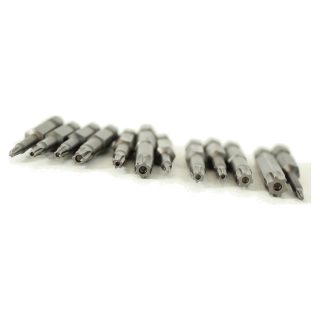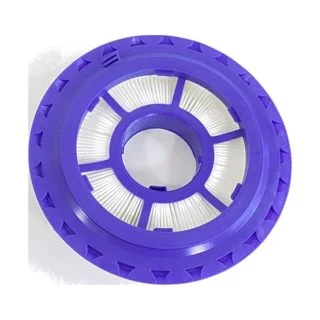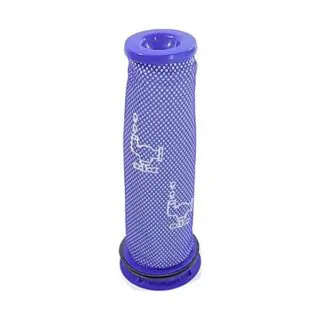Dyson Lower Hose Repair
The lower hose on the Dyson UP13 is a crucial component that allows the vacuum to maintain airflow while reclining. Over time, this hose can tear or degrade, leading to loss of suction and reduced cleaning performance. Replacing the lower hose is a difficult repair due to the number of screws and components that need to be removed. This step-by-step guide will walk through the entire replacement process, ensuring proper installation and alignment. This guide applies to DC65, DC66, UP13, and UP20 Dyson models.
What parts do you need?
We sell high-quality replacement parts to ensure long-lasting and effective repairs! You can also check the schematic page for this vacuum cleaner.
How do I know when to...
Replace my Dyson Ball lower hose?
Loss of Suction
If the vacuum struggles to pick up debris, even with a clean filter, a torn lower hose may be the cause. A visible tear in the hose can disrupt airflow, reducing suction power.
Difficulty Reclining
The hose helps maintain flexibility when tilting the vacuum backward. A damaged hose may restrict movement or cause resistance when reclining.
Visible Tears
The lower hose frequently bends as the vacuum moves, leading to eventual cracking or splitting. Inspect for holes, fraying, or visible damage.
Air Leaks / Whistling
A tear in the hose may cause whistling or hissing noises while running. This indicates air escaping through a break instead of flowing through the vacuum properly.
Let's get down to business...
Step-by-Step Repair Guide
Step 1: Remove the Cleaner Head
- Locate the red clip on the cleaner head and pop it off.
- The cleaner head will detach easily.
✅ This is the easiest part of the repair—don’t be fooled!
Step 2: Remove the Ball Filter Cover
- Unscrew the ball cover using a half-turn motion.
- Lift the cover to remove the filter underneath.
- Flip the vacuum over to access the lower components.
Step 3: Remove the Screws and Access the Hose
- Use a T8 Torx screwdriver to remove six screws securing the lower housing.
- Slide the panel to reveal two additional silver T10 screws near the hose.
- Remove the two black T8 screws to separate the lower housing.
- Locate the small Phillips screw securing the lower hose and remove it.
✅ Be sure to keep screws organized, as different sizes are used throughout the assembly.
Step 4: Detach the Damaged Hose
- Carefully pull the hose out from behind the lower assembly.
- Avoid removing the white gear mechanism, as it is difficult to reattach.
- Pry the plastic ring clip to release the hose from the mount.
- The hose is glued in place—use a knife or pliers to cut through the existing material.
Step 5: Clean the Hose Connectors
- Remove all remaining glue and debris from the hose connectors using a pick tool or knife.
- Ensure the grooves are completely clean to allow a snug fit for the replacement hose.
- Avoid using solvents, as they can weaken the plastic and cause damage over time.
Step 6: Attach the New Lower Hose
- Apply flexible adhesive inside the connector grooves.
- Thread the new hose onto the connectors by turning it until it reaches the built-in stop.
- Ensure the hose clips align properly with the slots on the vacuum body.
- Let the adhesive set briefly before proceeding to final assembly.
Step 7: Reassemble the Vacuum
- Slide the new hose back into position and secure it under the lower panel.
- Reattach the spring to ensure proper tension.
- Reinstall the small Phillips screw to secure the hose in place.
- Carefully reattach the lower assembly, aligning all clips and grooves correctly.
- Install the four silver T10 screws first, ensuring the housing is stable.
- Reattach all black T8 screws to secure the ball cover.
Step 8: Reinstall the Ball and Filter
- Reinsert the ball filter and secure the cover with a half-turn motion.
- Reattach the cleaner head, ensuring the red clip locks securely.
- Inspect the hose to ensure proper fit and movement when reclining.
You also might need...
Other Items for This Repair
While completing this repair, you should check these other important items on your vacuum cleaner to ensure the best possible performance and longevity!
Final Thoughts
Replacing the lower hose on a Dyson UP13 is a detailed but essential repair to restore full suction and maneuverability. By carefully removing the old hose, cleaning the connectors, and installing the new part with proper alignment, the vacuum will function like new. While the process involves numerous screws and delicate components, following these steps ensures a smooth repair without damaging critical parts.
Need More Stuff?
We offer comprehensive part diagrams and repair tutorials to help you keep your vacuum running at its best. VacuumsRus is your one-stop-shop for anything vacuum cleaner related!
Schematics and Parts Diagrams
You can find the schematics for each model this repair is applicable to here:
Schematic and parts list for: Dyson Model: UP20 Ball Animal 2
Schematic and parts list for: Dyson Model: UP19
Schematic and parts list for: Dyson Model: UP16
Schematic and parts list for: Dyson Model: DC77 dc75 UP14
Schematic and parts list for: Dyson Model: DC65/DC66/UP13








